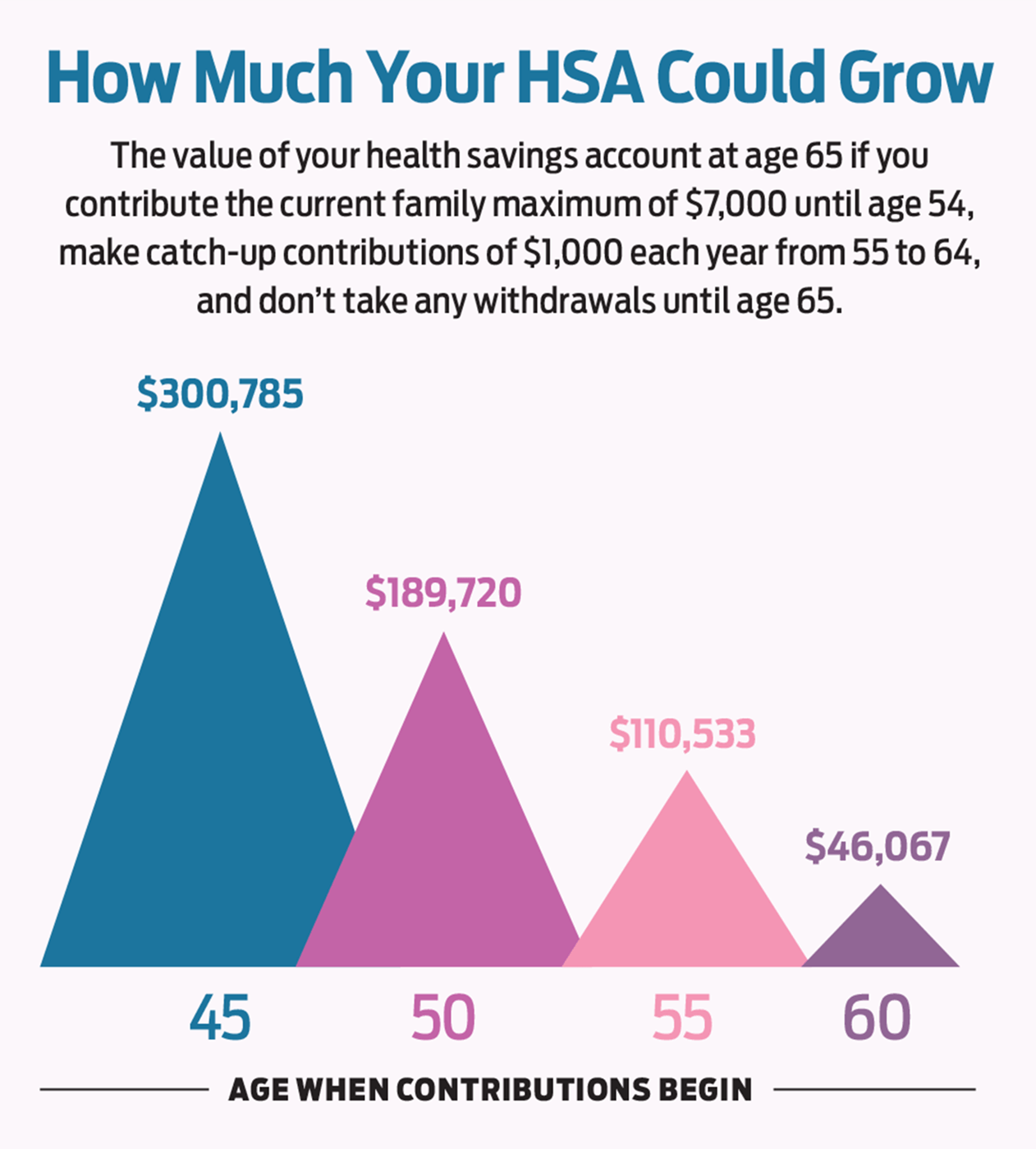Investing in an HSA? Better Shop Around
Health savings accounts are a great way to save long term, but high fees can hurt returns.


Nearly half of all people covered by private health insurance are now in high-deductible plans, with the percentage rising every year, according to the National Center for Health Statistics. Whether you sign up for a high-deductible plan by choice or because it’s the only option available, having a high-deductible policy unlocks a valuable opportunity: the ability to get a triple tax break with a health savings account. Your contributions are tax-deductible (or pretax if made through your employer), the money grows tax-deferred, and you can withdraw money tax-free for eligible medical expenses at any time.
You’ll get the biggest benefit if you invest the HSA money for the future and use other cash for current expenses. There’s no time limit for withdrawing HSA money tax-free for eligible expenses you incur once you open the account, as long as you keep your receipts.
While these accounts provide a tax-efficient way to save for future health care costs, high fees can diminish their appeal.

Sign up for Kiplinger’s Free E-Newsletters
Profit and prosper with the best of expert advice on investing, taxes, retirement, personal finance and more - straight to your e-mail.
Profit and prosper with the best of expert advice - straight to your e-mail.
If your employer offers an HSA, that’s usually your best bet; most employers cover the administrative fees, and employers often contribute to employees’ accounts. But if you’re getting an HSA on your own, it’s important to compare the costs of different plans. Morningstar found that nine out of 10 popular HSAs charge a maintenance fee, ranging from $12 to $54 per year, and several charge an extra fee of $18 to $36 to invest the money, in addition to annual mutual fund expenses. (Some waived the maintenance or investing fee if you keep a minimum of $2,000 to $5,000 in the account.) The fees can be difficult to decipher. The industry needs a lot more transparency, says Morningstar’s Leo Acheson.
The options are improving. Fidelity, which used to offer HSAs only through employers, recently introduced an HSA available directly to consumers that charges no annual or maintenance fees. And Vanguard just started to offer HSAs to employers. The competition from new offerings should help lower fees and improve transparency; Acheson saw the same thing happen with 529 college-savings plans.
To qualify for an HSA, you need an HSA-eligible insurance policy with a deductible of at least $1,350 for individual coverage or $2,700 for family coverage, whether you get insurance through your employer or on your own (you can’t contribute if you’re enrolled in Medicare).

Get Kiplinger Today newsletter — free
Profit and prosper with the best of Kiplinger's advice on investing, taxes, retirement, personal finance and much more. Delivered daily. Enter your email in the box and click Sign Me Up.

As the "Ask Kim" columnist for Kiplinger's Personal Finance, Lankford receives hundreds of personal finance questions from readers every month. She is the author of Rescue Your Financial Life (McGraw-Hill, 2003), The Insurance Maze: How You Can Save Money on Insurance -- and Still Get the Coverage You Need (Kaplan, 2006), Kiplinger's Ask Kim for Money Smart Solutions (Kaplan, 2007) and The Kiplinger/BBB Personal Finance Guide for Military Families. She is frequently featured as a financial expert on television and radio, including NBC's Today Show, CNN, CNBC and National Public Radio.
-
 Designing Your 'Immortal' Financial Plan
Designing Your 'Immortal' Financial PlanExplore an approach that offers solutions for those navigating the intersection of longevity, fulfillment and financial security.
By Dennis McNamara
-
 How to Protect Your Privacy While Using AI
How to Protect Your Privacy While Using AIHow to keep your information and finances safe while using AI, including ChatGPT and Perplexity.
By Bob Haegele
-
 Roth IRA Contribution Limits for 2025
Roth IRA Contribution Limits for 2025Roth IRAs Roth IRA contribution limits have gone up. Here's what you need to know.
By Jackie Stewart
-
 Four Tips for Renting Out Your Home on Airbnb
Four Tips for Renting Out Your Home on Airbnbreal estate Here's what you should know before listing your home on Airbnb.
By Miriam Cross
-
 Five Ways to a Cheap Last-Minute Vacation
Five Ways to a Cheap Last-Minute VacationTravel It is possible to pull off a cheap last-minute vacation. Here are some tips to make it happen.
By Vaishali Varu
-
 How to Figure Out How Much Life Insurance You Need
How to Figure Out How Much Life Insurance You Needinsurance Instead of relying on rules of thumb, you’re better off taking a systematic approach to figuring your life insurance needs.
By Kimberly Lankford
-
 Amazon Big Deal Days Is Coming! We’ve Got All the Details
Amazon Big Deal Days Is Coming! We’ve Got All the DetailsAmazon Prime To kick off the holiday season with a bang, Amazon Big Deal Days runs Tuesday, October 8 and Wednesday, October 9.
By Bob Niedt
-
 How to Shop for Life Insurance in 3 Easy Steps
How to Shop for Life Insurance in 3 Easy Stepsinsurance Shopping for life insurance? You may be able to estimate how much you need online, but that's just the start of your search.
By Kaitlin Pitsker
-
 Five Ways to Shop for a Low Mortgage Rate
Five Ways to Shop for a Low Mortgage RateBecoming a Homeowner Mortgage rates are high this year, but you can still find an affordable loan with these tips.
By Daniel Bortz
-
 Retirees, It's Not Too Late to Buy Life Insurance
Retirees, It's Not Too Late to Buy Life Insurancelife insurance Improvements in underwriting have made it easier to qualify for life insurance, which can be a useful estate-planning tool.
By David Rodeck